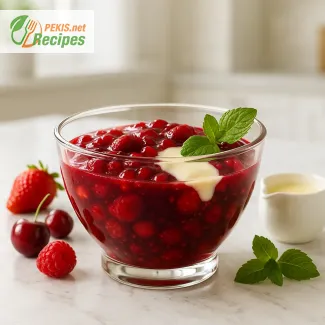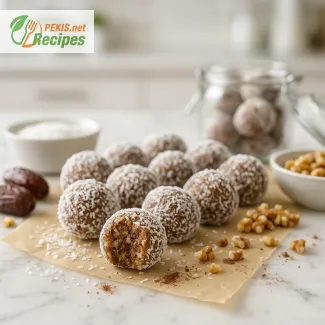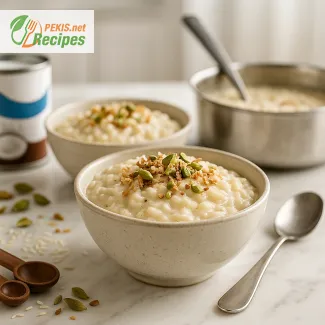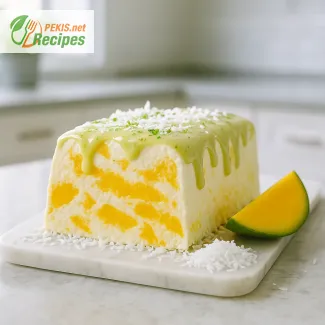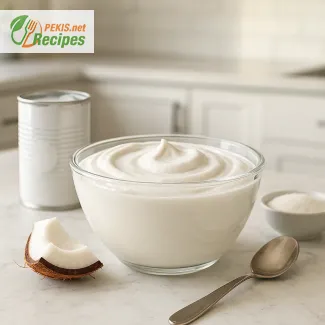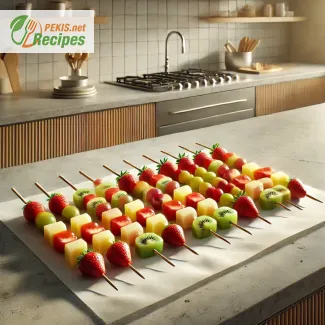
Discovering the Sweet Art of Tanghulu: A Timeless Street Treat with a Viral Twist
The resurgence of a centuries-old Chinese candy tradition
Once a beloved winter street snack in northern China, Tanghulu has stepped into the global spotlight thanks to its eye-catching shine and satisfying crunch. These glossy, candied fruit skewers are no longer confined to food stalls in Beijing or Xi’an — they are now dazzling viewers across TikTok, Instagram, and YouTube, sparking curiosity and cravings far beyond their origins. Known for their jewel-like coating and the contrast between crisp sugar shell and juicy fruit, Tanghulu offers both visual allure and a unique tasting experience that blends tradition with modern fascination.
What sets Tanghulu apart from other candied fruits is its rock-hard sugar glaze, which envelops the fruit like glass, shattering with every bite. Unlike Western-style candied apples that are typically sticky and chewy, Tanghulu delivers a clean snap, followed by the fresh juiciness of the fruit inside. This textural contrast is central to its popularity and a key reason why food lovers around the world are recreating the recipe at home.
What exactly is Tanghulu?
Tanghulu (糖葫芦), also known as bing tanghulu, translates literally to “sugar gourd” due to its traditional use of Chinese hawthorn berries, a small, tart red fruit. Skewered on thin bamboo sticks and dipped in molten sugar, the fruits harden instantly as the sugar crystallizes, forming a glossy, glassy surface. While hawthorns remain the most authentic choice, today’s Tanghulu skewers often include grapes, strawberries, blueberries, oranges, kiwi, and even cherry tomatoes — fruits with both visual appeal and balanced acidity that offset the sweetness of the sugar coating.
Thanks to the growing demand for aesthetic and photogenic foods, Tanghulu has evolved beyond its roots while keeping the same simple ingredients and handcrafted charm. Whether arranged on a street vendor’s cart or styled for social media, Tanghulu embodies a blend of nostalgia and novelty, making it a dessert that appeals to every generation.
A cultural icon turned modern-day sensation
Originating during the Song Dynasty over 800 years ago, Tanghulu was initially used for medicinal purposes to aid digestion and balance the body’s qi. Over time, it transformed into a sweet treat sold in winter markets, particularly popular during Chinese New Year celebrations and festivals. Wrapped in folklore and deeply connected to tradition, Tanghulu was a symbol of joy, festivity, and warmth in cold months.
Its recent resurgence, however, owes much to digital trends. As food creators share ASMR-style videos of the sugar coating crackling between their teeth or capture slow-motion shots of syrup dipping and hardening, Tanghulu’s tactile appeal has gone viral. The combination of minimal ingredients, a short preparation time, and the mesmerizing visual transformation from raw fruit to glistening candy has turned Tanghulu into a global DIY challenge.
Why Tanghulu is winning hearts worldwide
In an era where consumers are rediscovering homemade desserts with a twist, Tanghulu taps into multiple trends: simple ingredients, cultural authenticity, visually stunning results, and interactive food experiences. Making Tanghulu at home provides a rewarding sense of craftsmanship — from threading the fruits on skewers to mastering the precise temperature needed to achieve that perfect sugar crack.
The beauty of Tanghulu lies in its adaptability. Although rooted in Chinese tradition, it’s easy to infuse the recipe with local flavor — swap hawthorns for strawberries, use skewers with alternating colors, or add a light dusting of sesame seeds for texture. Whether made with tropical fruits or classic berries, each version offers a customized dessert that still honors the original spirit.
Tanghulu is also becoming a staple in fusion desserts, served alongside matcha cakes, layered over ice cream, or used as edible décor for cakes and party platters. Its versatility makes it more than just a nostalgic street snack — it’s now part of modern culinary creativity.
Choosing the right ingredients for Tanghulu
The best Tanghulu begins with firm, fresh fruit that can withstand the sugar coating without releasing too much moisture. The ideal fruit should be dry on the outside, slightly tart, and bite-sized, to avoid sugar shell cracking prematurely or becoming soggy. While strawberries and grapes are most common in home versions, some creators go further, experimenting with kiwi, pineapple chunks, blackberries, and even lychees.
In professional kitchens, controlling sugar crystallization is a fine art. The sugar must be heated precisely to the hard crack stage (around 150°C / 300°F) to ensure the perfect snap. Using skewers also helps keep fingers clean and adds to the presentation — whether lined up in a vase-like display or served as party appetizers.
A recipe born for social media and celebration
Visually, Tanghulu is irresistibly photogenic: the crystal-clear glaze reflects light, the vibrant fruits offer a rainbow-like spectrum, and the skewers evoke a playful, almost nostalgic feel. This makes Tanghulu an ideal dessert for celebrations, children’s parties, cultural events, or simply as a weekend treat that feels both artistic and indulgent.
It’s also a food that invites shared experience. Making Tanghulu can be a fun group activity, perfect for introducing younger generations to Asian culinary traditions. With a little patience and practice, home cooks can transform simple ingredients into a dessert that looks like culinary jewelry.
From ancient dynastic courts to trending reels and short videos, Tanghulu bridges centuries of Chinese culinary heritage with today’s passion for accessible, expressive, and satisfying food. It’s not just candy on a stick — it’s a story, a sound, and a sensation that brings crunch, color, and culture into every bite.
Step 1 – Prepare the fruit:
Wash the strawberries and grapes thoroughly. Pat them completely dry with a paper towel — moisture will prevent the sugar from sticking. Remove the green tops from the strawberries if desired, but keep the fruit whole for best results.
Step 2 – Skewer the fruit:
Thread 3 to 4 fruits (alternating grapes and strawberries) onto each bamboo skewer. Ensure each piece is firmly attached and evenly spaced. Set the skewers on a parchment-lined tray.
Step 3 – Make the sugar syrup:
In a medium saucepan, combine sugar and water. Bring to a boil over medium heat without stirring. Once it begins boiling, reduce to low-medium heat and continue simmering until the mixture reaches the hard crack stage (150°C / 300°F). Use a candy thermometer for accuracy. This usually takes 8–10 minutes. The syrup should be clear, not amber.
Step 4 – Coat the fruit:
Once the syrup is ready, remove from heat. Working quickly and carefully, tilt the saucepan and dip each skewer into the syrup, rotating to coat all sides. Let the excess sugar drip off. Place the dipped skewers on the parchment paper to cool and harden.
Step 5 – Serve and enjoy:
Let the Tanghulu rest at room temperature for 5 minutes or until the sugar coating is completely hardened. Serve immediately for best texture.
Enhancing the Tanghulu Experience: Creative Twists on a Classic Candied Fruit Treat
Transforming traditional Tanghulu with modern ideas and better techniques
The beauty of Tanghulu lies in its simplicity — fruit, sugar, water — yet within these minimal ingredients is room for culinary creativity and refinement. Whether you're preparing this treat for a festive gathering, social content, or simply indulging in a crunchy-sweet snack at home, small enhancements can elevate both flavor and presentation. A few expert adjustments to ingredients, technique, and even serving ideas can turn your homemade Tanghulu into a polished, delightfully memorable dessert.
Fruit variations that balance taste and texture
The traditional choice for Tanghulu is Chinese hawthorn, a fruit known for its tartness and firm texture. However, modern adaptations with strawberries and grapes have become the global norm — both juicy and appealing, though they bring their own challenges.
To go beyond the basics, consider blueberries, kiwi, blackberries, pineapple chunks, or even mandarin orange segments. These fruits offer new flavor dimensions:
- Pineapple adds tropical acidity and aroma but should be cut into firm chunks to prevent breakage.
- Kiwi slices bring color and a sweet-sour complexity but must be thoroughly dried to avoid sugar slipping off.
- Mandarin segments offer a citrusy brightness and are excellent when served immediately due to their moisture content.
Key tip: Always choose firm, underripe fruit rather than fully ripe or overripe options. Less moisture and higher density lead to better adhesion and longer-lasting crunch.
Flavor infusions and sugar upgrades
The sugar shell is where most home cooks can introduce creative touches. While white granulated sugar is standard, infused syrups or alternative sweeteners can make a dramatic difference:
- Add vanilla bean, ginger slices, or lemon zest to the sugar-water mix during heating (remove before dipping) for subtle aromatic undertones.
- Replace white sugar with organic cane sugar or light brown sugar to add caramel depth. Be mindful that these may darken the glaze and alter the crunch.
- Mix in a small amount of honey or agave syrup (no more than 10%) to soften the sugar shell slightly and introduce floral notes.
Just ensure the final sugar mixture still reaches the hard crack stage to maintain that signature glassy texture.
Avoiding common mistakes in Tanghulu preparation
One of the most frequent pitfalls is crystallization during the sugar boiling phase. Stirring the mixture or using an unclean pot can cause grainy results. To prevent this:
- Clean all utensils before use.
- Do not stir the sugar once it begins to boil.
- Use a pastry brush dipped in water to wipe down the sides of the pan, avoiding sugar build-up.
Another mistake is coating wet fruit. Any surface moisture will cause the sugar to slide off or bubble. Always dry fruit completely with paper towels and allow them to air-dry for a few minutes.
Overheating the sugar is another issue — if it turns amber or dark brown, you've passed the hard crack stage. This results in a burnt flavor and sticky texture. Use a thermometer and pull the syrup off heat precisely at 150°C (300°F).
Making Tanghulu healthier and more suitable for all diets
Tanghulu is inherently low in fat, but still high in refined sugar. If you're preparing the treat for children, diabetics, or health-conscious guests, consider reduced-sugar or natural sweetener options:
- Try erythritol or monk fruit sweetener blends designed for candy-making. These allow for hard-crack coating without spiking blood sugar.
- Consider stevia-based sugar alternatives, but check heat resistance, as many do not caramelize properly.
Though texture may vary slightly, modern sweeteners have evolved to offer nearly identical results to traditional sucrose-based recipes.
For added nutritional value, serve Tanghulu with yogurt-based dipping sauces or pair with toasted seeds for a crunchy garnish.
Why homemade Tanghulu is superior to pre-made versions
When making Tanghulu yourself, you have full control over fruit freshness, sugar quality, and hygiene. Street versions, while authentic, often use fruit that’s been handled or exposed for hours. Homemade Tanghulu is typically:
- Fresher in taste and texture
- Safer and more customizable
- A great family or party activity
Moreover, you can tailor it to seasonal produce, dietary needs, and presentation style — all while maintaining that traditional charm.
Presentation and storage tips for lasting quality
Tanghulu is best eaten within one hour of preparation, as sugar begins absorbing moisture from the air, softening the shell. However, to extend shelf life:
- Store in an airtight container at cool room temperature.
- Avoid refrigeration — condensation will destroy the crisp coating.
- If serving for guests, insert skewers vertically in a decorative base (e.g. floral foam or firm fruit like watermelon) for a festive centerpiece.
To enhance the visual impact, alternate fruits by color, cut shapes (like melon balls or heart-cut strawberries), and add edible glitter or gold dust before the sugar hardens.
Each of these improvements — from fruit selection and sugar infusion to health swaps and presentation flair — transforms Tanghulu from a humble street treat into an elevated, personalized dessert. Whether you’re honoring tradition or exploring bold new twists, Tanghulu offers a blank canvas for both taste and imagination.
Allergens present in the recipe:
- None of the core allergens (e.g. nuts, dairy, eggs, gluten, soy, shellfish) are present.
Gluten:
This recipe is naturally gluten-free.
Substitution tips to avoid allergens or gluten:
- Ensure skewers are not coated with lacquer containing wheat-derived ingredients (rare, but possible).
- Only use fresh fruit, without processed toppings or fillings.
Vitamins and minerals per serving (approximate):
- Vitamin C: 45 mg – supports immune system and collagen production
- Vitamin A: 15 µg – important for eye health and cell growth
- Potassium: 220 mg – helps regulate blood pressure and nerve function
- Calcium: 15 mg – supports bone health
- Iron: 0.4 mg – essential for red blood cell formation
- Magnesium: 12 mg – contributes to muscle and nerve function
Antioxidants per serving (approximate):
- Anthocyanins (from strawberries and grapes): 30 mg – help protect cells from oxidative stress
- Resveratrol (from grapes): 0.3 mg – supports heart health and anti-inflammatory response
- Ellagic acid (from strawberries): 1.2 mg – contributes to cancer-fighting properties and skin health
